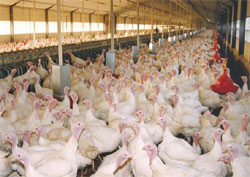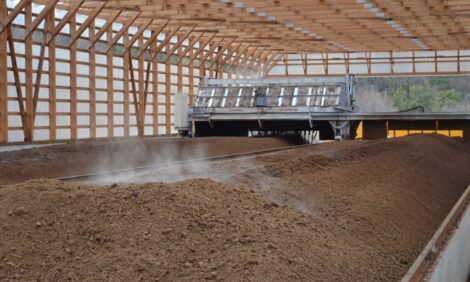



Turkey Production in the EU
An overview of the industry by avec, the Association of Poultry Processors and Poultry Trade in the EU Countries, in its annual report for 2011. The organisation focuses on Salmonella testing of turkey meat and on foot pad scoring as a measure of animal welfare.
European production of turkeys remains rather stable at 1.8 million tons since the crisis of avian influenza in 2006. However, the picture is different across countries: production growth is mainly recorded in Germany and Poland, while France, Italy and the United Kingdom are struggling to stabilise production levels.
The sharp price increase of agricultural raw materials is taking place in a difficult economic situation. In addition, higher feed conversion rates prevail. The turkey industry must prioritise the reduction in cost price.
Production costs are volatile. Volatility of consumption patterns are difficult to manage. Even apart from food scares, the consumer today is very price-sensitive. Increases in retail prices make consumers reconsider their purchasing decisions. Given the price position of turkey meat, it should, however, be possible to maintain its current level of consumption.
Imports from third countries is a real challenge to the EU production because they impact the balance of the market. These imports are playing an important role in the supply of the processing industries. This demonstrates that the European turkey industry is burdened by the requirements of European regulation on the protection of the environment and animal welfare. These additional costs cannot be recovered by the European producers and have not been incorporated by imported products.
Reduction in Prevalence of Salmonella enteritidis and Salmonella typhimurium
Regulation (EC) 584/2008 of 20 June 2008 establishes the Community objective of reducing the prevalence of Salmonella enteritidis and Salmonella typhimurium in turkeys. The maximum percentage of meat turkey flocks positive with respect to these two serotypes must be reduced to less than or equal to one per cent by 31 December 2012.
The European industry has evidence for prevalence rates today. The European Commission has nevertheless decided to establish the absence of Salmonella enteritidis and Salmonella typhimurium in 25g of turkey meat, despite the possible progress obtained during the transitional period until 31 December 2012. The tightening of the regulations comes as the EU welcomes the continued decline in the number of human cases registered and it assigns that result to the effectiveness of the global approach.
Turkey Welfare
 |
Apart from the regulations on the protection of animals during transport and at the time of killing, the turkey sector is paying attention to the welfare of turkeys during rearing. Foot pad dermatitis (FPD) is considered as a welfare indicator in broilers although it may be questioned whether it could be a tool for monitoring turkey welfare. The natural character of turkey production is different from chickens in that they do not turn the litter, like broilers. From literature and experience in practice, it is clear that the cause of FPD is multifactorial, including contact between foot pad and litter/ excreta, growing conditions, genetic variation and nutrition. A comprehensive study is required to the solutions to reduce the incidence and severity of FPD in turkeys for sustainable turkey production in Europe.
A consortium of research institutes and small and medium-sized enterprises and their associations have submitted a project for European funding to gain more scientific knowledge on the development and causative factors of FPD in commercial turkeys and on the relationship between FPD and health, welfare and performance.
December 2011








